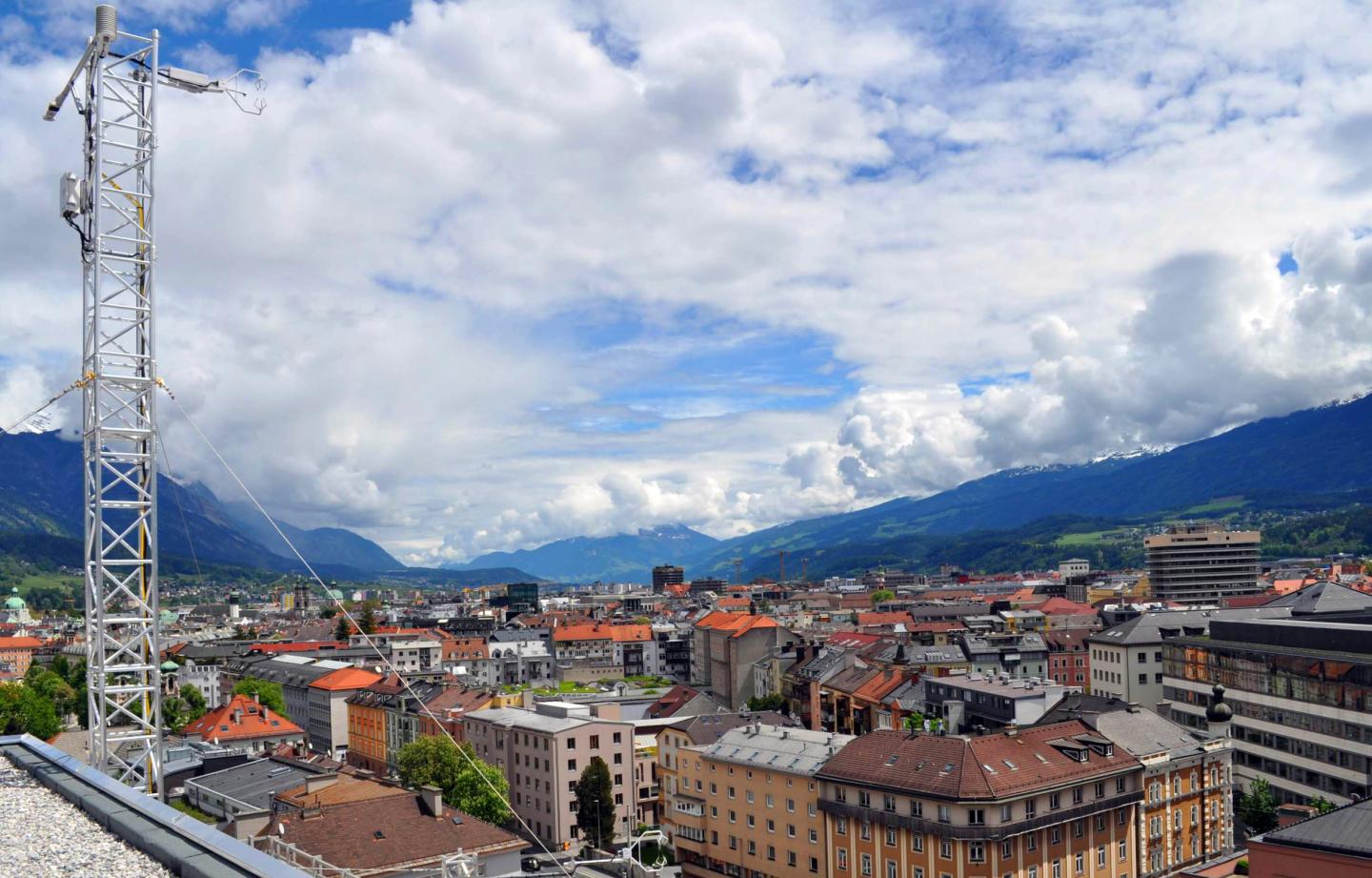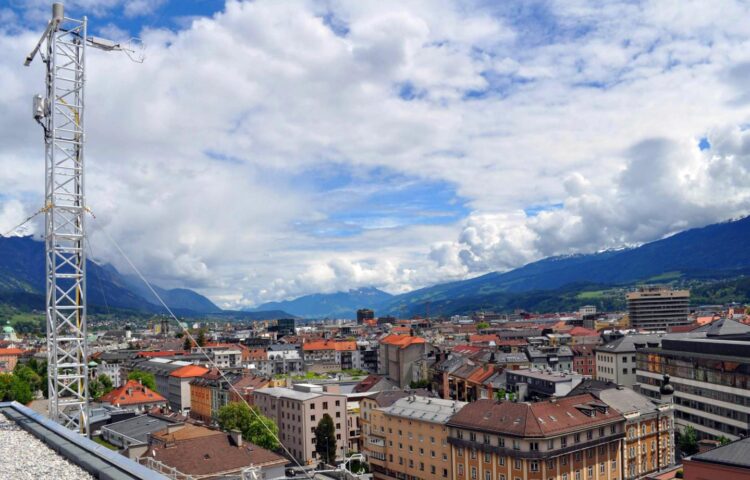Traffic significantly underestimated as cause of nitrogen oxide pollution in cities

Credit: University of Innsbruck
The far-reaching mobility restrictions at the beginning of the Corona pandemic in March 2020 created a unique situation for atmospheric sciences: “During the 2020 lockdown, we were able to directly investigate the actual effects of drastic traffic restrictions on the distribution of air pollutants and on the emission of climate gases,” says Innsbruck atmospheric scientist Thomas Karl. With his team, he has now published a detailed analysis of air quality during the first lockdown in the city of Innsbruck, Austria, in the journal Atmospheric Chemistry and Physics. “We find significantly greater decreases of air pollutants than of carbon dioxide, for example,” the researcher says, summarizing the results. In the past year, some studies showed contradicting results because the influence of weather was often not factored in, on the one hand, or a detailed comparison with emission data was not possible, on the other hand. Based on a unique measurement strategy in combination with detailed source emission data, the Innsbruck researchers can now provide a reliable analysis. Their results confirm assumptions inferred from earlier work: “The decrease in nitrogen oxides and other pollutants due to reduced traffic is stronger than often assumed,” emphasizes Thomas Karl. “We find that the proportion of nitrogen oxides emitted from traffic is higher than often assumed, while the proportion from domestic, commercial and public energy consumption is lower.” The European energy transition, with the switch to cleaner combustion in the residential and industrial sectors, is having a positive effect on air quality and has been underestimated in some cases. Atmospheric researcher Thomas Karl summarizes “We project that in many European inner cities, comparable to Innsbruck, more than 90 percent of nitrogen oxide emissions are caused by traffic”.
Emission models need to be adjusted
In urban regions across Europe, the air quality thresholds for nitrogen oxides and other pollutants are regularly exceeded. It is not always easy to determine which polluters are responsible for how much emission. Until recently, the key method for quantifying emissions has relied on exhaust emission tests on test stands that were then extrapolated in a model. However, the actual amount of air pollutants emitted by a vehicle or a heating appliance in everyday use can depend on many factors. The diesel scandal has made it clear how inconclusive measurements on the test stand can be, when interpreting their impact on the environment. Assessment of air management by environmental and health authorities heavily depends on atmospheric models that rely on accurate emission data. Until now, it was very difficult to assess actual air pollutants emitted in a specific region and constraining their emissions. The team led by Thomas Karl from the Department of Atmospheric and Cryospheric Sciences at the University of Innsbruck closes this gap with the so-called eddy covariance method, which measures air composition and wind flow in detail and thus allows conclusions to be drawn about the air pollutant emission strengths. With the Innsbruck Atmospheric Observatory (IAO) set up at the University of Innsbruck, the air over Innsbruck is now being continuously studied.
###
The current study was financed by the Austrian Science Fund FWF.
Media Contact
Thomas Karl
[email protected]
Related Journal Article
http://dx.





